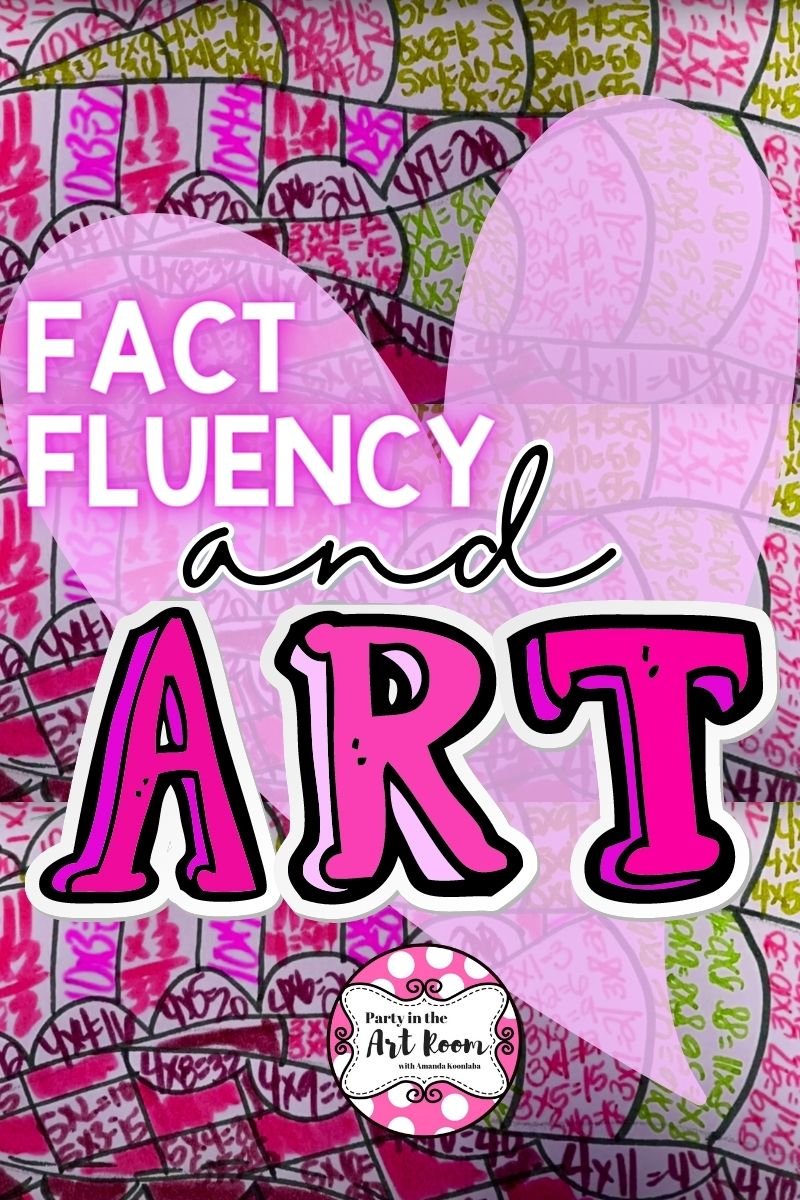The Artistic Guide to Fact Fluency for Every Math Teacher
Math Facts Practice to Math Facts Fluency PRO
Whether you are teaching math facts fluency and math fact families, or you are having each student do basic math fact practice so they can become a math fact pro, using art as part of the learning process is a highly effective strategy to employ.
I’ve been fortunate enough to teach numerous subjects at different grade levels. One of these is math, and every year that I taught this subject a huge focus was on math facts fluency and practice.
Building fact fluency in math is essential for every student and integrating art makes it a much easier task.
The Four Tenets of Math Fact Fluency
There’s more to building fact fluency than memorizing math facts.
Math fact fluency also means understanding what a math fact is, how it relates to everything else in math and beyond, and how you can use different thinking strategies to get the answer.
I've read several scholarly works about Fact Fluency, and they all agree on four tenets:
Flexibility – Students understand and know the basic math facts flexibly, meaning they can do 7+2 =9, 9-2 =7 and all of the associated with the full math fact families as well. They can think about it in different ways.
Strategy – Students can understand how to add numbers in different ways to get the correct answer.
Efficiency – Students get the correct answer AND quickly.
Accuracy –Students get the answer right.
Stories as Art
Phil Hansen from philinthecircle.com has a style of art that we can adopt when teaching math facts fluency. He creates art pieces from people’s stories. He listens to these stories, writes them, then uses the letters to make an image.
You can have your students send their stories to him; it could be a great way for them to practice a writing prompt. They could respond to him in one or two sentences and then develop that into a larger piece of writing.
You have to think about what the goal is when planning a lesson. Mine is to have students write their math facts and become fluent through repetition. And Phil’s artwork inspired the drawings for my fact fluency lessons.
Student Art: Math Fact Fluency in the Classroom
An 8-year-old student worked on this art (pictured). She filled up the heart shape with subtraction facts. She did some of her math facts with a pencil because she wanted them to be lighter than the markers. So, the student was using contrast, which is something she already knows about. She added in the black before filling in her numbers. What an amazing piece of practicing math fact fluency with art! This student is a real math fact pro!
My image (pictured) is a bit more complicated. If you have young students, I’d encourage you to work on shapes, and then do this. If you have older or gifted students, you could let them do more complicated drawings. You know your students and your goal better than anyone. So, I want you to decide how to manage this.
Through these drawings, your students will write math facts repeatedly, and they’ll get faster at it. This is the best way to practice, and they get to make an artistic composition at the same time.
How to Create the Image:
Let students draw from a template for the basic shapes: You should let students draw their own pictures because if you hand them a worksheet with drawings, they won’t care about it. To them, it’s only a math coloring sheet then. Some students may need a template to trace over and then write their math facts. You'll have to model writing these math facts and doing so quickly. (Hint: In my training on this lesson that is linked below, I model how to do this.)
Let students use another image as a prompt: If you’re not comfortable teaching students how to draw, print blackline masters that they can look at. Party in the Art Room has a ton of basic drawing prompts and drawing basic animals games on Teachers Pay Teachers that can be easily used as a more structured way to start this lesson. You can have your students use these to easily draw their images first, then they can fill in the basic drawings with their math facts and math fact families.
Let them draw whatever they want: You can always just freestyle it as well. Just allow students to come up with drawings on their own, and only intervene if they are struggling. You don't want them to get frustrated. We don't want you thinking the lesson is not working or that art integration doesn't work. If this doesn't work the first time, try something different. You can also read about other ways to get students to do basic drawing in this post. It’ll help you get the math fact fluency art project started.
Repetition is a principle of design, and that’s important when you're doing math facts. By writing math facts repetitively, your students will be more accurate and efficient when using those math facts.
Are you ready to learn more?
This Math Fact Fluency and Written Art course is completely self-paced and on-demand. In this masterclass, you’ll get video instruction from me, Amanda Koonlaba, on the four tenets of math fact fluency for all four basic operations. I’ll go in depth into using the work of Phil Hansen and repetition to teach the tenets of efficiency and accuracy for fact fluency.
Here’s a look at the course curriculum:



